A Grade II-listed house in the Surrey Hills that was designed by Sir Edwin Lutyens and comes with its own secret tunnel
Winkworth Farm at Hascombe sits in some 15 acres of fine gardens and grounds, and has been immaculately restored by its current owners.


The timber-framed core of Grade II-listed Winkworth Farm at Hascombe, in the redesignated Surrey Hills National Landscape, two miles from Godalming and eight miles from Guildford, dates from the mid 1500s. It started out as a prosperous yeoman’s house and was occupied by yeomen farmers until the death of the last of these, John Baxter, in 1837.
For the next 70-odd years, the house was divided up and used by farm labourers and their families. Extended in about 1774, it was remodelled in 1895 by Sir Edwin Lutyens and extended to the rear by his closest pupil, John Duke Coleridge, in about 1908. In 1914, it was remodelled internally for London solicitor Walter Webb-Ware by Frederic Troup, who also altered the gardens, which had been planted and laid out by Lutyens’s patron and collaborator, Gertrude Jekyll. Lutyens built almost half the present house, although his work was mainly confined to the rear, where the quad — originally a straw yard formed by the house and two barns — was described by Pevsner as ‘unbelievably picturesque’.
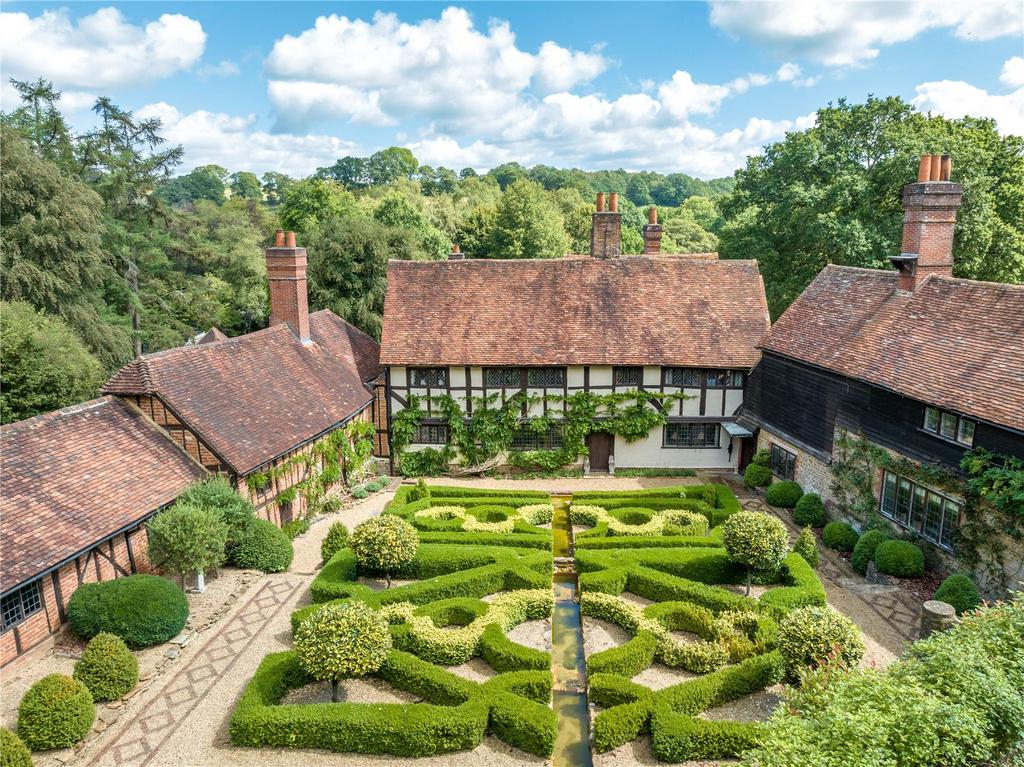
Phillippa Dalby-Welsh of Savills country department quotes a guide price of £6.75 million for Winkworth Farm, set in more than 15 acres, in which, from formal gardens, magical grounds run down to a two-acre lake with two islands and a boathouse. Beyond the driveway is a walled vegetable garden and, away from the house, a stable yard, a manège and paddock. A wooded copse, under-planted with snowdrops, daffodils and bluebells, leads down to a babbling stream, which is bridged in parts and flanked with bamboo.

In 1918, Webb-Ware sold Winkworth Farm to Dr Wilfred Stephen Fox, an eminent dermatologist who practised at St George’s Hospital, London. A keen conservationist and a passionate gardener, he acquired the neighbouring 130-acre Thorncombe estate in 1937 and, the following year, began planting an arboretum in the wild Thorncombe Valley near the house with 1,000 species of trees and shrubs that provide glorious displays of colour in spring and autumn.

Inspired by the great landscape gardens of Westonbirt, Sheffield Park, Exbury and Leonardslee, whose owners he knew well, Fox planted trees and shrubs that would achieve a good splash of colour, including springtime species such as magnolias, crabapples and cherries, along with maples, azaleas and a host of other trees and shrubs that are known for their autumn foliage. With the long-term future in mind, he planted 10 different oaks and seven kinds of beech, including the huge southern beeches that are widely admired today.
In 1952, he donated some 65 acres to the National Trust, adding a further 35 acres in 1957. Still run by the Trust with Fox’s vision in mind, Winkworth Arboretum’s 120-odd acres of magnificent woods and lakes remain open to the public and rank high among Surrey’s most popular attractions. Winkworth Farm offers a welcome opportunity to walk or ride out directly from the property, where the surrounding countryside offers some of the most spectacular scenery to be found anywhere in the South of England.
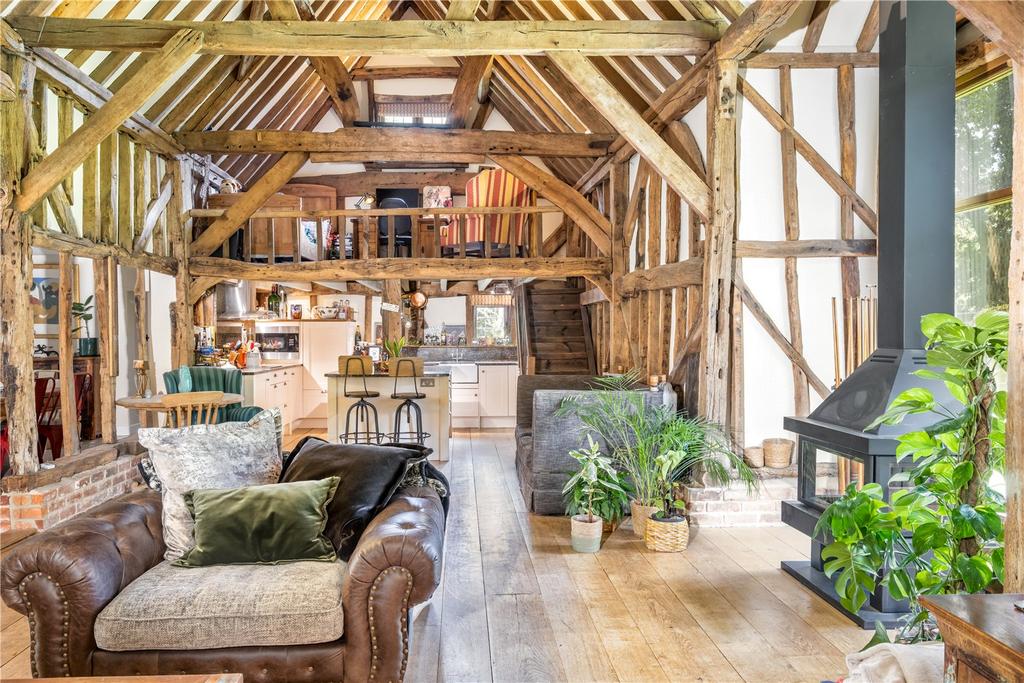
Following Fox’s death in 1962, Winkworth Farm was acquired by the artist and wildlife conservationist David Shepherd, who lived there for ‘39 enormously happy years’, moulding it to his own eccentric taste. Next to the kitchen, he created an early-Victorian shop front, now the pantry, which boasted a bow window, a bell and a wooden, panelled door over which he erected a sign, ‘Winkworth and Daughters 1963’, a tribute to his four daughters.
Exquisite houses, the beauty of Nature, and how to get the most from your life, straight to your inbox.
He later bought an old barn that had been blown down at Parkhurst Farm, Sussex, in the great storm of 1987, and re-erected it for use as his studio. This was connected to the cellar of the main house by an underground tunnel, which he used to ‘commute’ to work, producing his famous paintings of steam trains, elephants, tigers and other African wildlife.
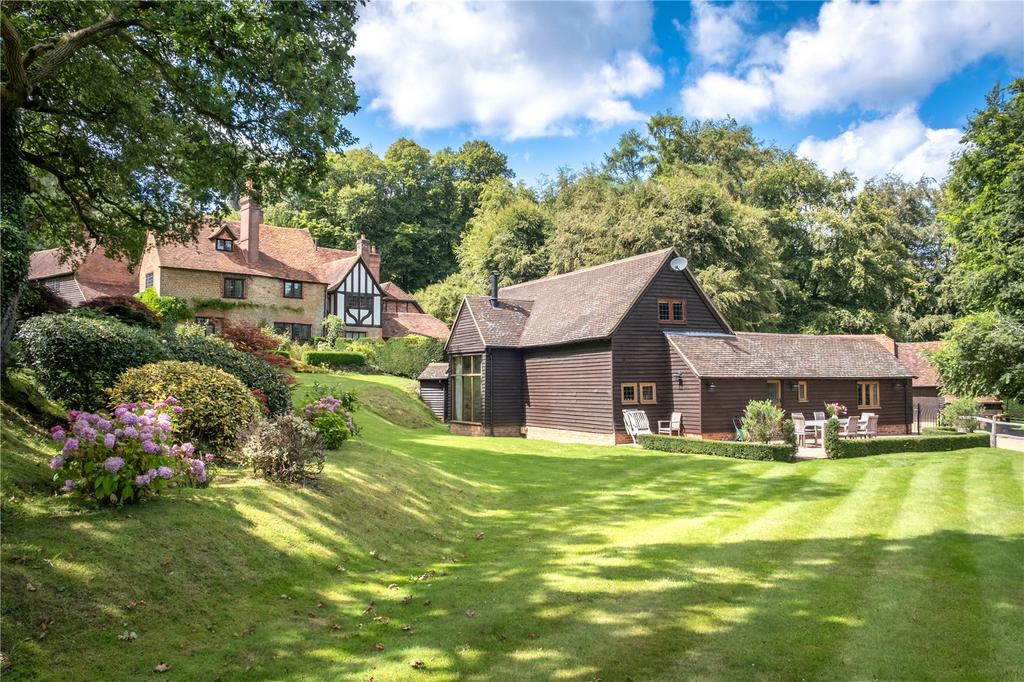
In 2000, Shepherd sold Winkworth Farm to Simon Culmer, a former director of Cisco systems, who reputedly ‘fell in love with the house and garden at first sight’. When he and his wife moved to Hampshire in 2008, he sold Winkworth Farm to the present owners, who have sensitively upgraded the house, installing a Fired Earth kitchen, replacing secondary glazing with an appropriate oak-framed equivalent, fitting new boilers and radiators, insulating several rooms and installing underfloor heating in bathrooms, the boot room and laundry room.
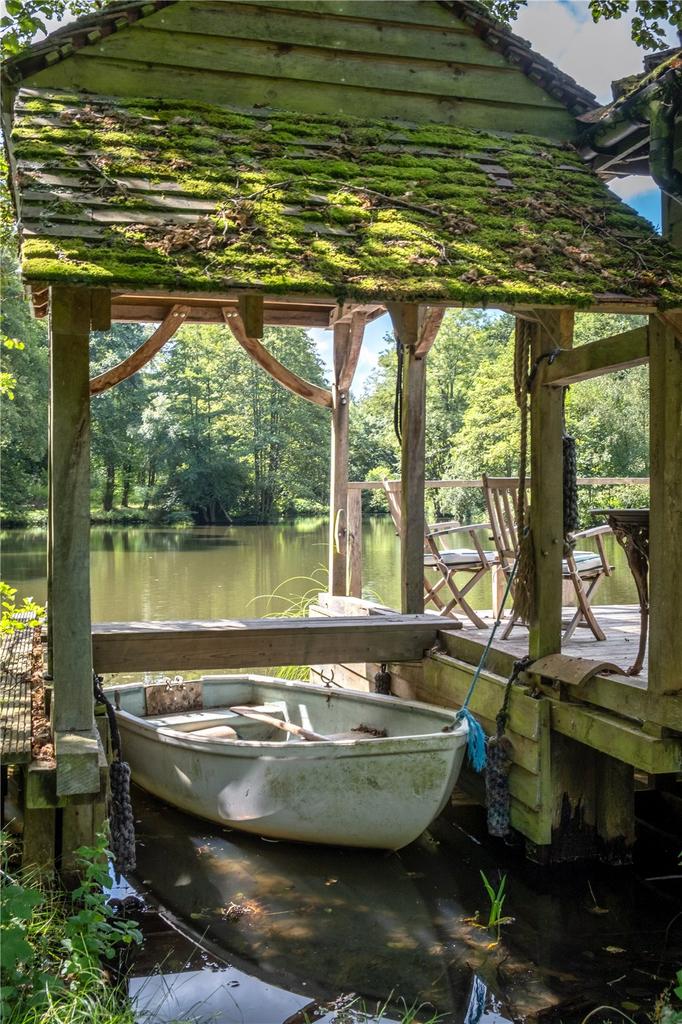
The main house offers more than 7,900sq ft of characterful accommodation on three floors, including three main reception rooms, a bar/lounge, snug, two studies, a kitchen/ breakfast room, shop/pantry, various utilities, principal and guest bedroom suites, five further bedrooms and three bath/shower rooms. Winkworth Farm Barn, accessed via the tunnel from the wine cellar, has been converted by the current owners to secondary accommodation comprising a vaulted, open-plan kitchen/dining/living space with a study area and two bedroom suites.
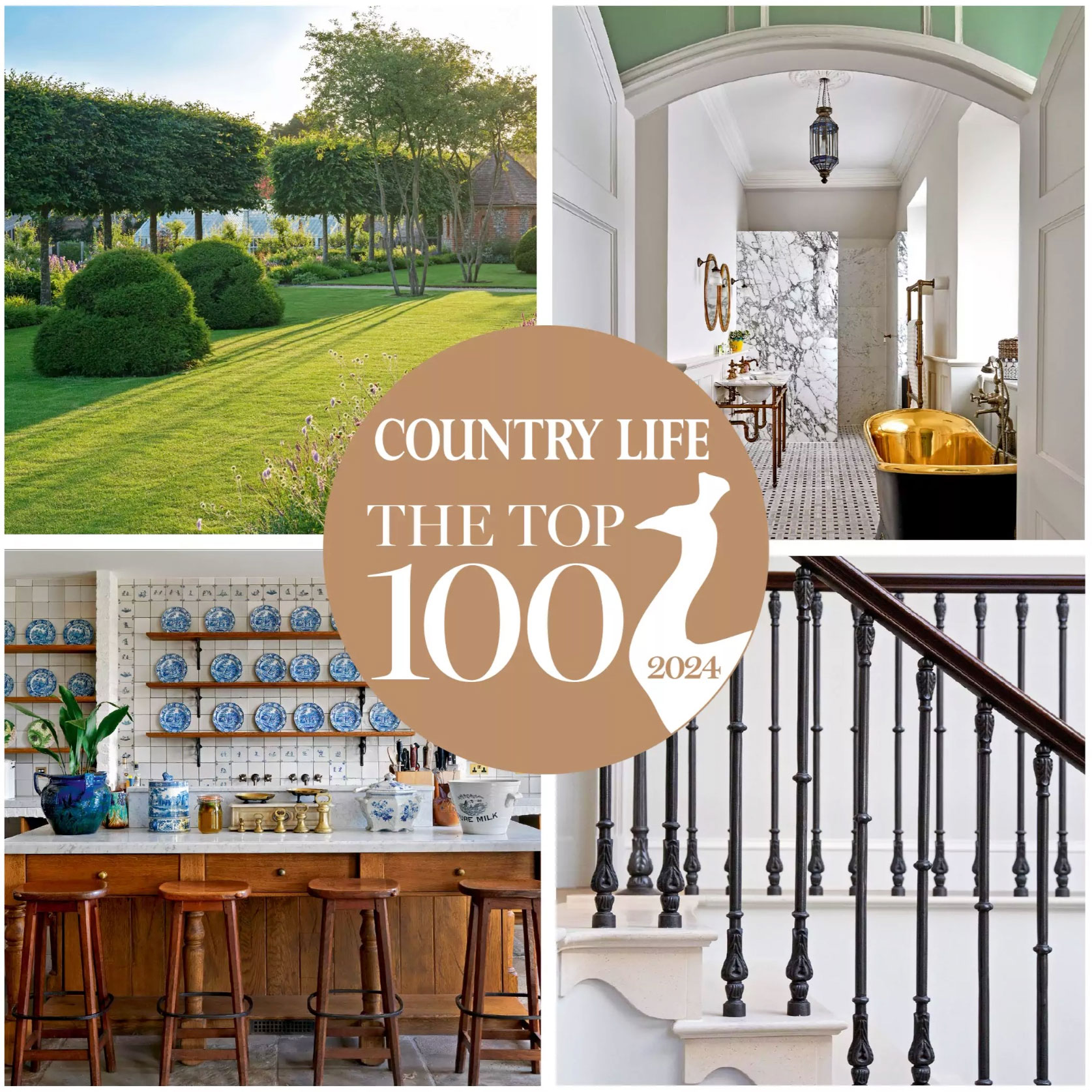
Country Life's Top 100: The magic of timelessness
Giles Kime's executive editor and interiors guru — and the man in charge of putting together our annual Country Life Top
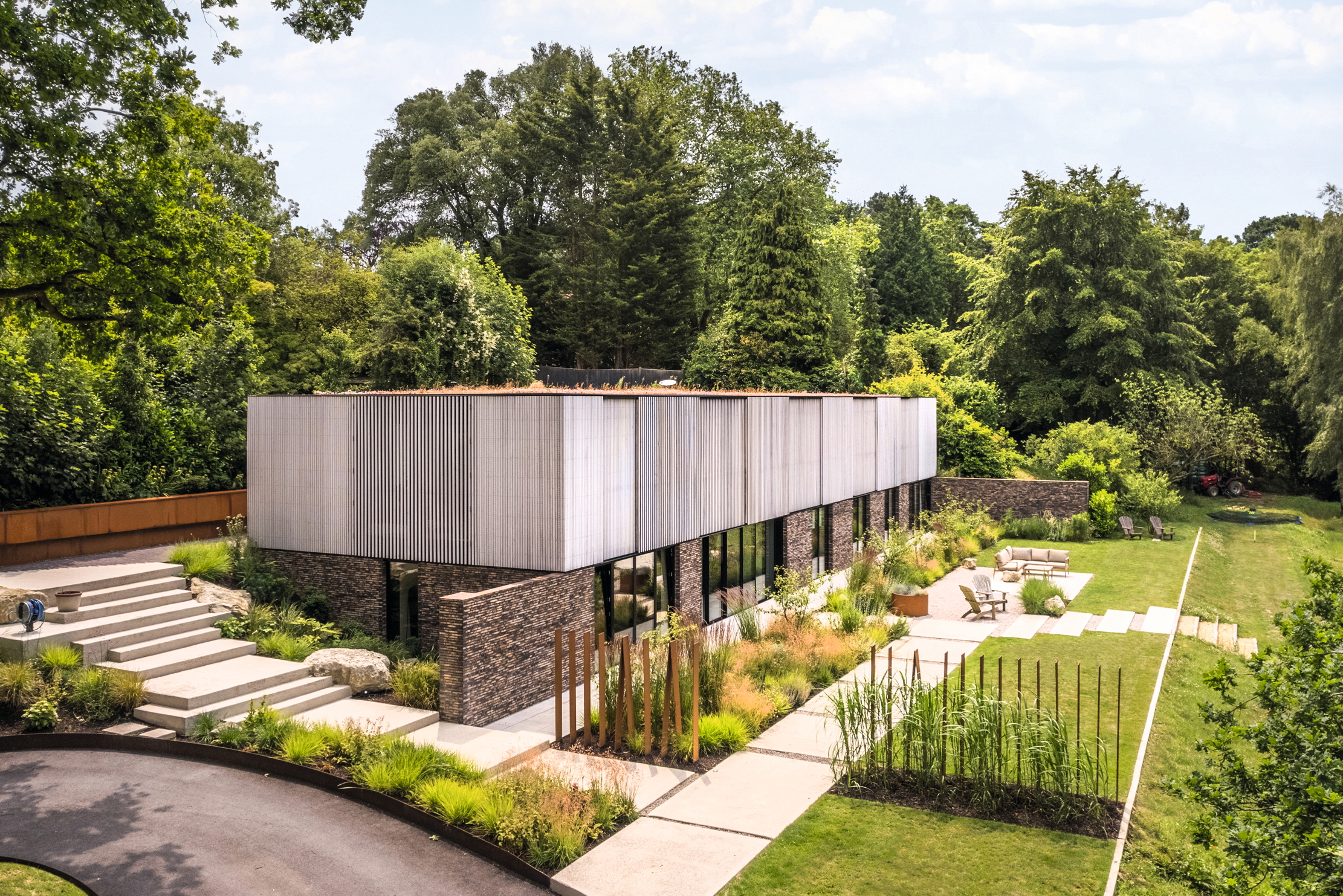
Credit: Savills
Modern elegance in this 6,500sq ft home cut into a hillside in the Kentish Weald
Waterfield House near Cranbrook is an award-winning family home occupying one of the finest positions in the English countryside.

A Grade II*-listed hall house in North Yorkshire with Capability Brown gardens
Built for the daughter of a king, Rudby Hall in Skutterskelefe might be one of the most significant country houses
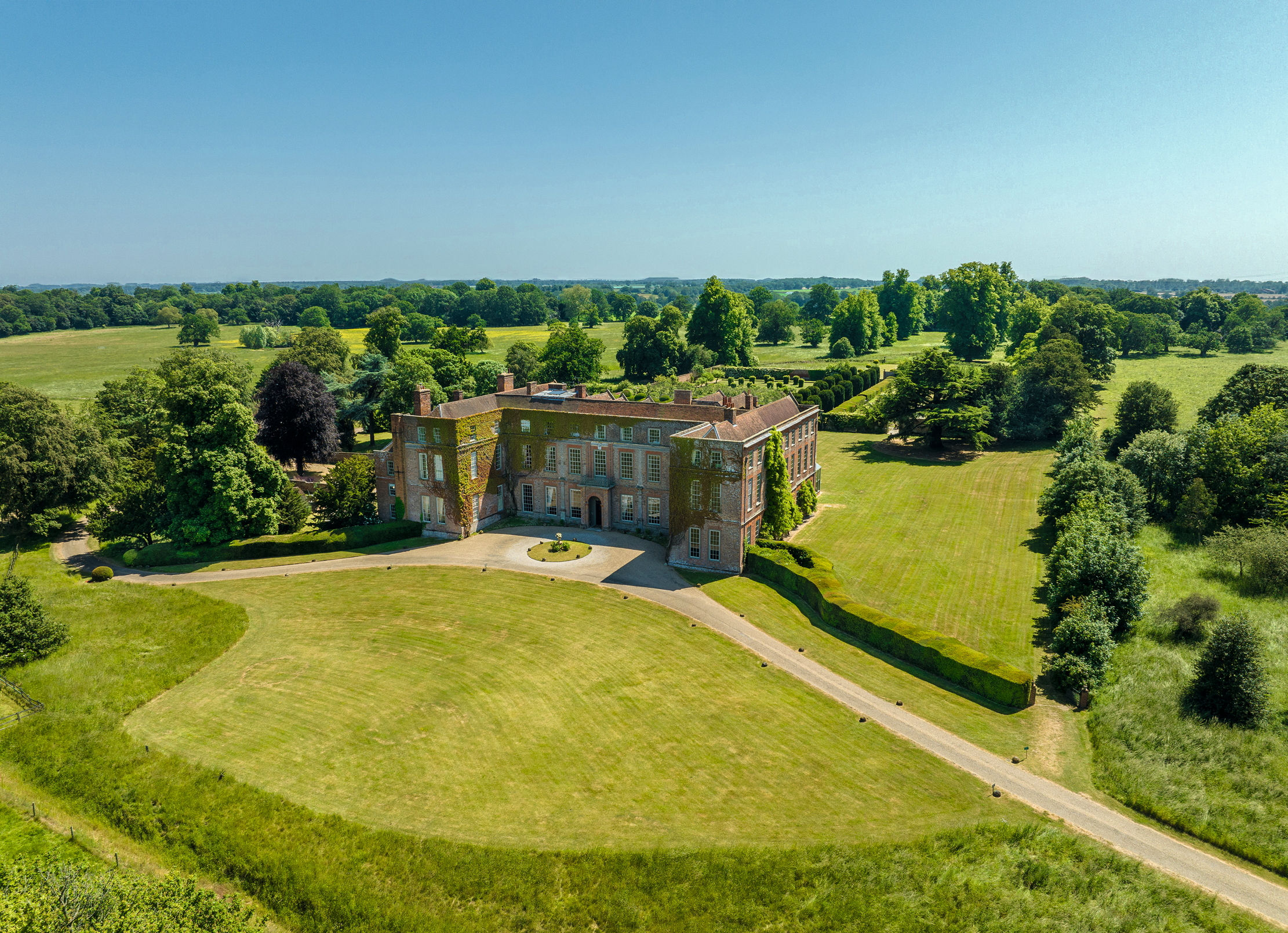
Credit: Strutt and Parker
One of Suffolk's great country house estates — 12 bedrooms, 1,763 acres and 36,000sq ft — comes up for sale at £19 million
Glemham Hall comes to the market for the first time in 101 years, and the scale of it is quite

